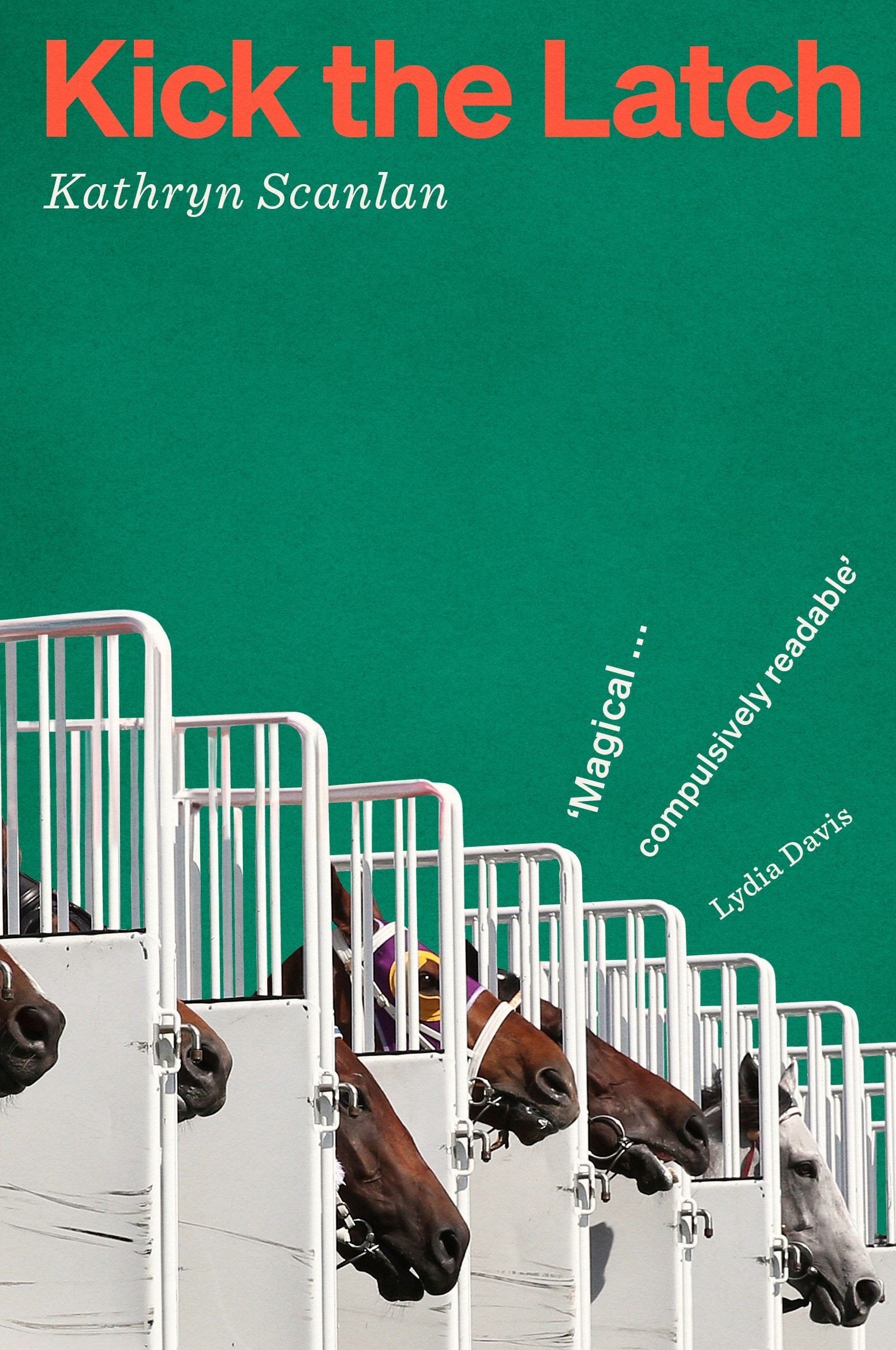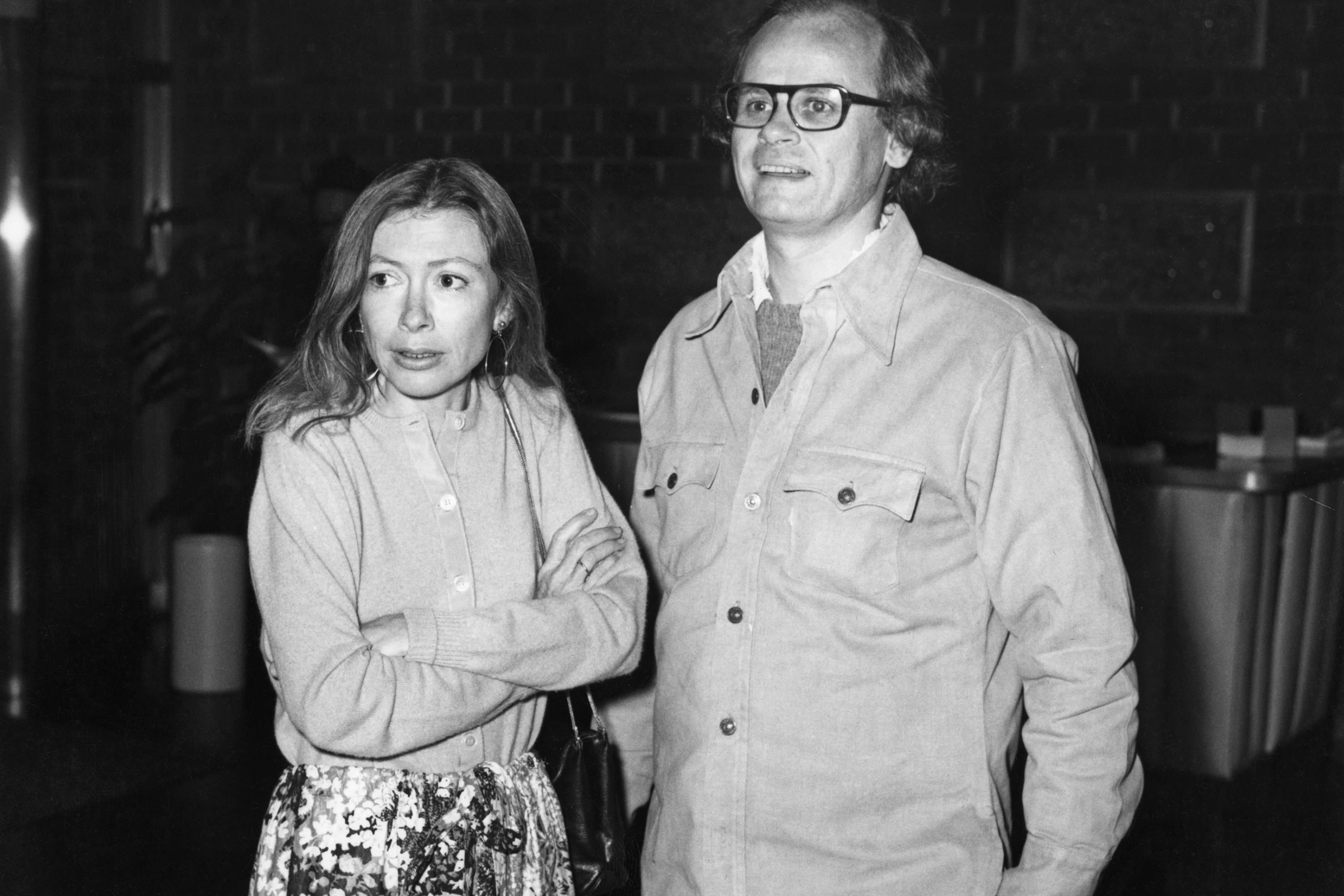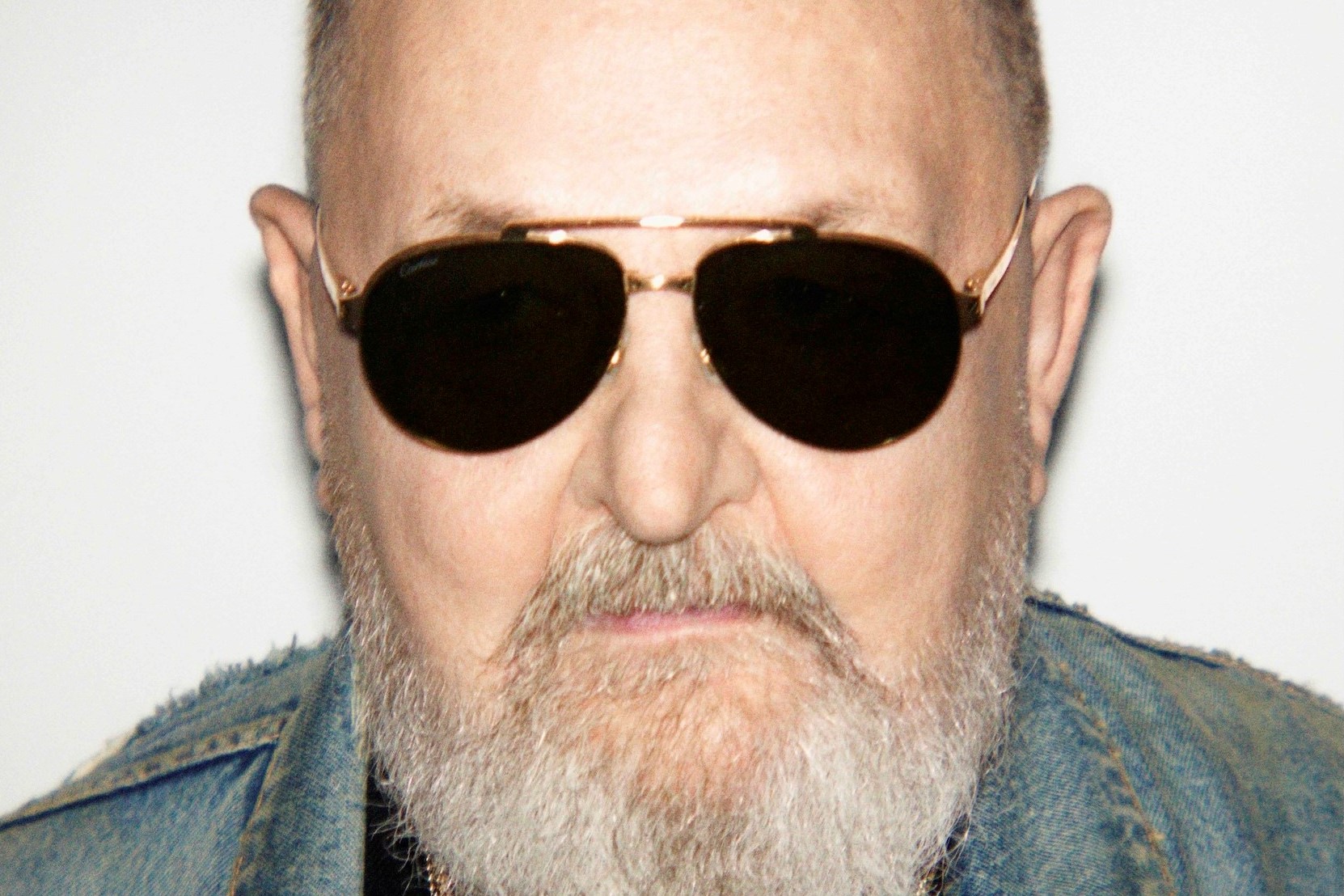“I was born with a dislocated hip. The doctor said I’d never walk,” remembers Sonia, an Iowa-born horse trainer, in the opening pages of Kathryn Scanlan’s new novel Kick The Latch. “I was in there five months… Ended up I could walk. I attribute that to Dr Johnson. My mom always said, Well, if it wasn’t for Dr Johnson.”
So begins the story of Sonia. As the years unfold, it quickly becomes clear that this diagnosis-defying miracle probably had very little to do with Dr Johnson, whoever they are. This is a novel about an extraordinary woman living a (quote-unquote) ‘ordinary’ life, stoically navigating the muck and magic of the Midwest’s racetracks. Over the course of the book, she recalls misjudged love affairs and shock injuries, while drily poking fun at the absurdity of human nature (like the jockeys wrapping themselves in clingfilm and hotboxing themselves to lose weight before a race, sometimes with disastrous results). There is brutality, too, and the ambient banality of gender-based violence: Sonia is consistently underestimated, assaulted and abused – to a chilling degree – but always shrugs it off.
Scanlan, who is also from Iowa but now based in LA, artfully draws Sonia’s story from a series of transcribed interviews. Despite hours of conversation and decades of life, the author manages to whittle down her story to a series of short, vivid vignettes, spread sparsely across 160 pages. “I was developing the shape of the story in my mind, creating the arc,” Scanlan tells AnOther over the phone. “I wanted to be as faithful as possible to Sonia’s voice, but there was a lot of intervention from me. It’s a combination of our voices, and my sensibility is definitely there.”
The primary way Scanlan works her magic is through time: the author treats it like elastic, stretching it back and forth, depending on the scene. Seemingly trivial moments are elongated and filled with colour – like Sonia’s compassionate observations of horses, or the eccentric passing characters from her childhood – while life-altering violence is cut short, recounted in restrained staccato. It’s the perfect tribute to Sonia, who refuses to wallow in any pain or pretension, and perhaps why Kick The Latch is attracting so much success. In a world dominated by bullshit and bluster, where what you say means a thousand times more than what you actually do, Sonia is a tonic – an earthy woman who loves quietly but fiercely, and pays steady attention to the world around her. “You’re around some really prominent people,” she observes at one point, “and some are just as common as old shoes.”
Here, Scanlan tells us more about Sonia, her perceptions of time, and the problem with so-called “ordinary” stories.

Dominique Sisley: A lot of reviews of Kick The Latch have mentioned it is about an “ordinary” person, or an ordinary story – in The New Yorker, for example, Leslie Jamison wrote that you were “insistently drawn to ordinariness”. Would you say this is true?
Kathryn Scanlan: I understand and appreciate what Leslie Jamison is saying in that article, but I don’t really think of them that way. I don’t think of them as “ordinary stories”. I think of them as interesting stories, and people I’m drawn to. It’s a heat-seeking project; I’m going towards what I’m interested in. With [my first novel] Aug 9 – Fog and Kick The Latch, I was drawn to the way both of those women use language and how they talk about their lives and their frank, no-nonsense, plain-spoken way of interpreting the world.
DS: How did you find Sonia and draw out her story?
KS: Sonia is someone my parents know through the antique business; they’re all dealers. A few years ago my mother started telling me about this woman she’d got friendly with and the incredible stories she would tell. My mother thought Sonia was someone I would probably really enjoy talking with, too. So I arranged a meeting with her in Iowa while I was visiting my family – I coordinated the visit to coincide with a flea market that happens a few times a year, where Sonia has a booth near my dad’s. Our first conversation, which I recorded, lasted several hours. I wasn’t interviewing her, I was just listening to her. Especially that first conversation: I didn’t really ask anything at all, I just said, “Would you like to talk to me? Do you mind if I record it? Would you like to talk about whatever you want to talk about?” I wasn’t interrogating her or asking pressing questions. She likes to talk and she’s a great storyteller.
DS: She’s experienced a lot of trauma in her life which is spoken about in such a restrained way. The journalistic urge would be to push, to sensationalise. Did you ever feel tempted to probe further?
KS: I really don’t feel that way. I actually feel, in art, that things can have a more powerful impact when they’re told in a restrained way. But also I was so interested to hear how she was delivering this information. I was compelled by the way she delivered those stories. And I wouldn’t have thought of pressing her on that – there’s a lot to receive as a listener or as a reader from a story that’s delivered in that way.
“I actually feel, in art, that things can have a more powerful impact when they’re told in a restrained way” – Kathryn Scanlan
DS: The book plays with time: how we perceive time, how it passes, the moments we value and remember. Are these themes you think about a lot?
KS: Those are things I am always thinking about and am hounded by. [Laughs.]. I think time has a lot to do with writing. It might be the medium of writing. I really feel the pressure of time – I mean, probably all people feel this, but I am sort of tormented by it, what I’ve done and not done. Also loss and change, all of these things. Writing can be a way to contend with that, for me at least. It’s a way to make an assertion of the present.
That said, I think my relationship with time has got a little less tortured over the last few years. My husband would laugh at me because I had this habit where, every day, I would check on the time in shock: “It’s noon already? It’s five o’clock, are you kidding me?” I was continually baffled by how quickly a day would go, I couldn’t handle it. And it’s a cliche to say, but as I get older, time moves more quickly than it used to. It now feels like a day is gone immediately. So there’s maybe a little more resignation and acceptance from me: I have to deal with it and not get upset by it.
DS: Did talking to Sonia, and watching her reflect on her life, change your perception? I know there were some similarities in your upbringing.
KS: When she was talking about being around horses and caring for them, it brought up all of these things I hadn’t thought about in a really long time, things I’d forgotten I knew. Horses were a huge part of my life as a child, but they haven’t been at all as an adult really. There were a lot of very intimate sense memories that came back to me, listening to her.
“There’s something really important about interacting with beings who aren’t human and not trying to make their non-humanness relate to us or inform our lives... The human urge to anthropomorphise and use these creatures to talk more about ourselves is really kind of staggering” – Kathryn Scanlan
DS: Animals do seem to be a recurring theme in your work – you write about them with such empathy here, and they’re also integral to your short story collection The Dominant Animal. Is there something you think we can learn from them?
KS: I think they’re as interesting as people are. And I think we have everything to learn from how we interact with them and how we think of them – or don’t think of them. But I hesitate at the idea of them teaching us things, though they can teach us what it means to be not human. I think there’s something really important about interacting with beings who aren’t human and not trying to make their non-humanness relate to us or inform our lives, or to teach us anything. I think the human urge to anthropomorphise and use these creatures to talk more about ourselves is really kind of staggering.
DS: There’s a lot of violence in Kick The Latch – but even when Sonia recounts all of her own harrowing experiences, it’s the descriptions of animal violence that felt unbearable to me. Sonia also seems to gloss over her own pain, but treats the horses with so much empathy. Why do you think we have such a strong reaction to that kind of violence?
KS: I know what you mean. I have always felt that way and questioned myself for it. But it’s because animals are more or less at the mercy of humans, you know? We are the dominant ones. It’s not like they have much of a say in what happens to them. Whereas we like to think that, as humans, we have agency and free will, we make decisions. For example, I had to make the decision to euthanise my dog, which I feel devastated me more than losing my living grandparents, who died around the same time. My dog couldn’t tell me how she was feeling, she couldn’t talk to me, and so I had to decide for her.
DS: Do you feel like you learned a lot from working on this book, and speaking with Sonia? What are you taking away with you?
KS: I learned a lot from our conversations. She’s had some pretty tough things happen in her life and she is still an incredibly positive, upbeat person. I was so charmed by that, her resilience. There are a few lines from the book that, if I’m struggling with something, they’ll pop in my head – lines like, “gradually you get yourself back in your feed tub.” Or the horse who’s gone sour and is trying to build his confidence back up, how “he starts to think better of himself.” Things like that have stayed with me.
Kick The Latch by Kathryn Scanlan is published by Daunt Books, and is out now



